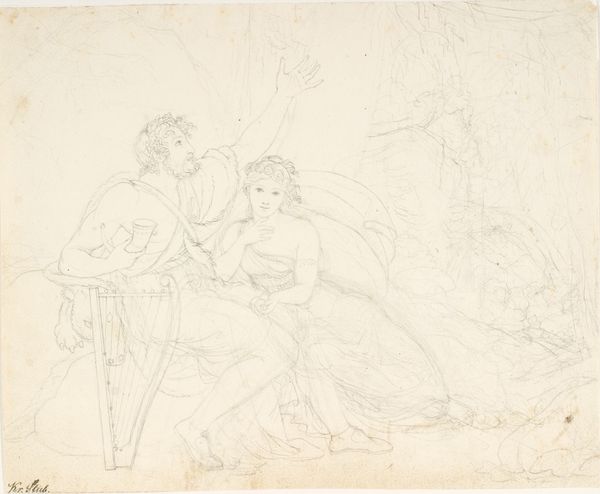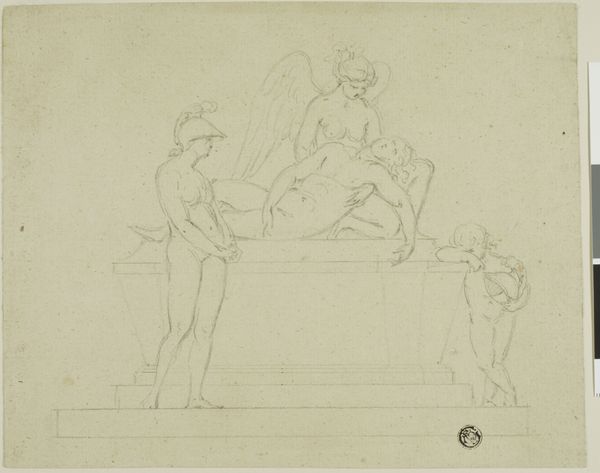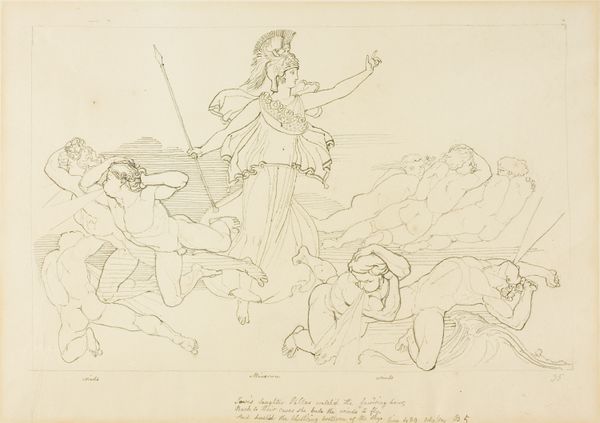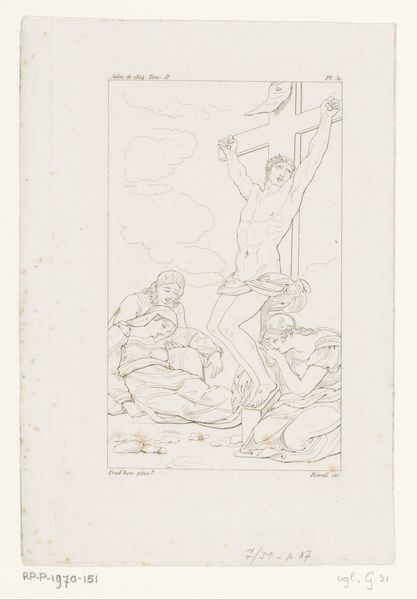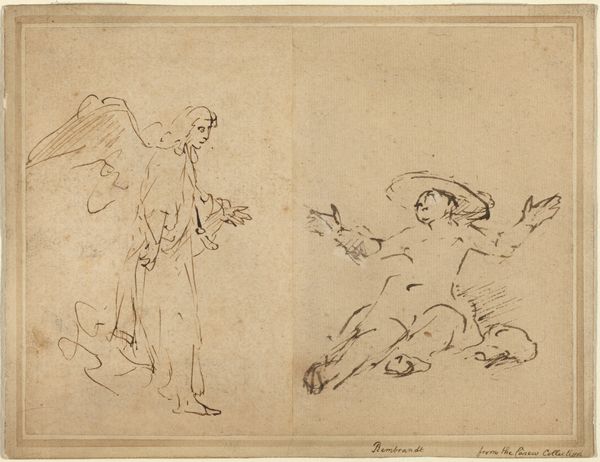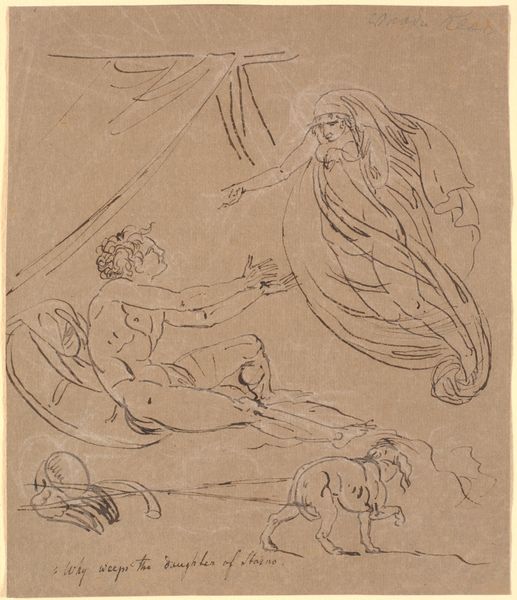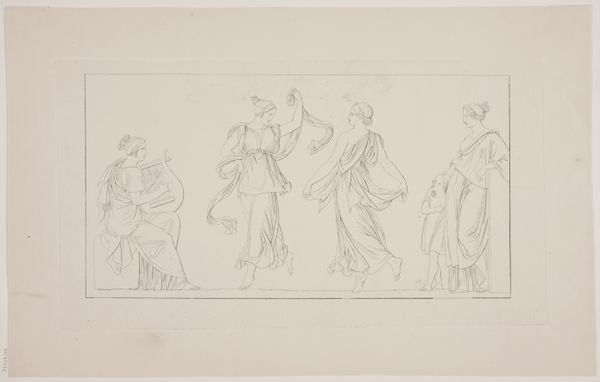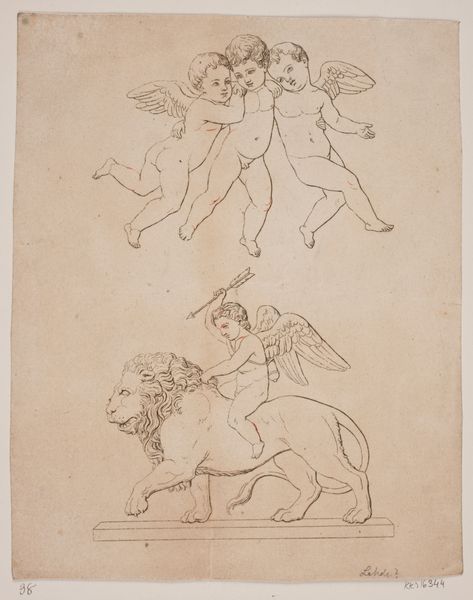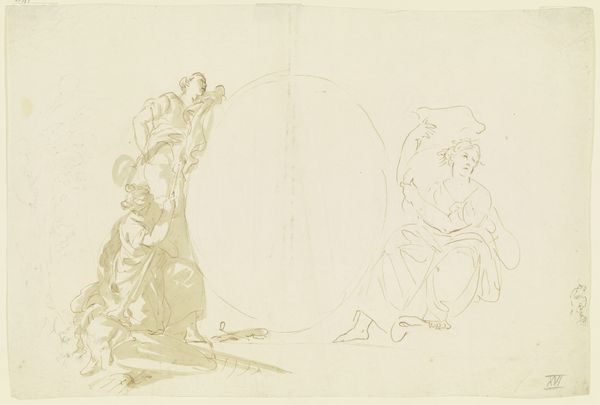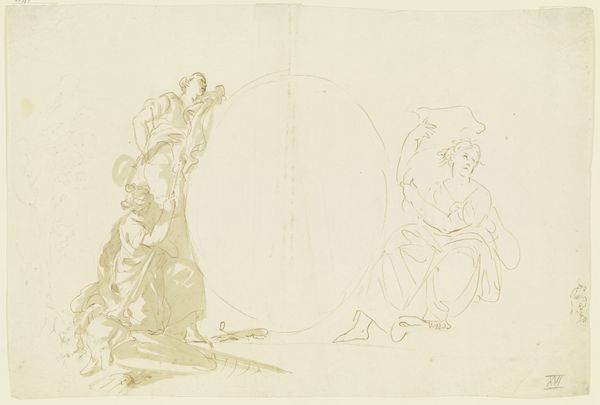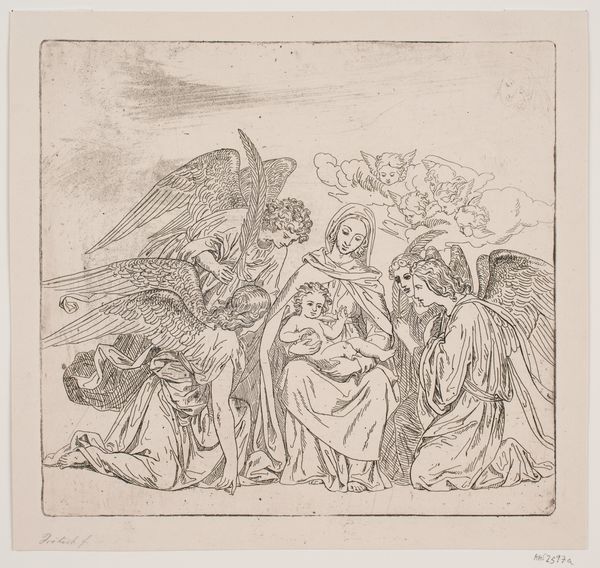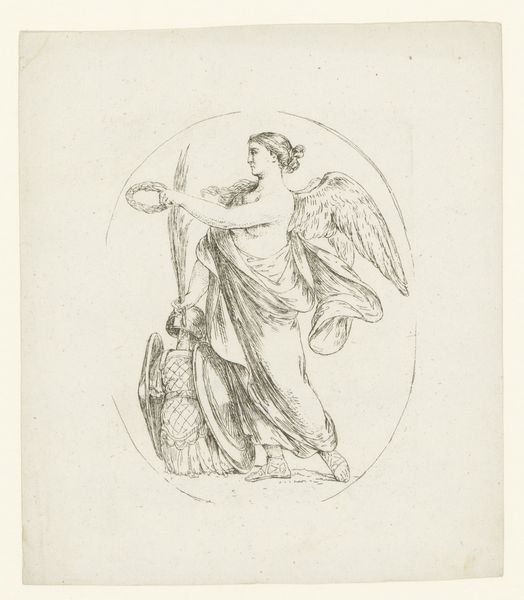
Dødens Engel bærer et lille Barn bort fra de sørgende Forældre 1800 - 1824
0:00
0:00
drawing, lithograph, print, etching, ink
#
drawing
#
ink drawing
#
allegory
#
lithograph
# print
#
etching
#
etching
#
figuration
#
ink
#
line
#
history-painting
Dimensions: 256 mm (height) x 341 mm (width) (bladmaal)
Editor: This is *Death Angel Carrying a Small Child Away from Grieving Parents*, an ink drawing and etching made sometime between 1800 and 1824, attributed to Heinrich Wenzler. It's heartbreaking, isn't it? The stark lines and simple composition really amplify the sense of loss. What symbolic meanings can we unpack here? Curator: Indeed, the emotional resonance is powerful, particularly in the visual vocabulary employed. Note how Death, depicted as an angel, is not fearsome but almost gentle in his bearing of the child. How does that strike you, given the inevitable connotations of death? Editor: It's a bit unsettling, actually. The angel's tenderness almost normalizes the tragedy, while the parents' grief seems...almost classical in its restraint. Is that typical for art of this period? Curator: It reflects the influence of Neoclassical ideals. Think about how ancient Greek and Roman art dealt with mourning - not through riotous displays of emotion, but through controlled, almost stoic, gestures. The angel is interesting, though. Traditionally, angels bridge the divine and mortal realms. What does this angel signify, in carrying a child specifically? Editor: Maybe innocence being taken back to its origin? Or perhaps a release from earthly suffering? It's interesting how the child also seems unafraid, even reaching towards the grieving parents. Curator: Precisely! The symbols intertwine: innocence, loss, acceptance, and transition. It's an exploration of mortality mediated through the visual language of the era, filtered through collective grief. The artist invites reflection, doesn't he? Editor: He certainly does. I hadn’t considered how much the artistic conventions shape the emotional impact, making it more than just a depiction of sadness, but a statement on how we process mortality as a culture. Curator: And perhaps, even find solace in its symbolic representation. Thank you, this has been a productive dialogue for me too.
Comments
No comments
Be the first to comment and join the conversation on the ultimate creative platform.
